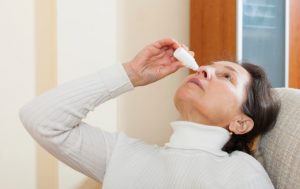 A nasal spray may prove to be an effective treatment for diabetes for quickly boosting blood sugar levels when they are low. The nasal spray includes a powdered glucagon which quickly increases blood sugar levels.
A nasal spray may prove to be an effective treatment for diabetes for quickly boosting blood sugar levels when they are low. The nasal spray includes a powdered glucagon which quickly increases blood sugar levels.
Typical treatment to control hypoglycemia – low blood sugar – is by mixing powdered glucagons with water and injecting it directly into a muscle. Although effective this may pose a challenge for someone already experiencing symptoms related to low blood sugar like dizziness or faint. The nasal spray can be easily administered even while symptoms are present.
Advertisement
Clinical professor Dr. George Grunberger – not involved in the study – commented, “This intranasal spray is a big deal. This is something which people have been crying for, for years. It was only a matter of time before something more practical came onto the market.”
Although in mild cases of hypoglycemia ingesting a sugar candy or fruit juice can effectively treat low blood sugar in extreme cases glucagon is much more effective. Grunberger added, “Somebody has to have the vial of glucagon on hand, then they have to add water, shake it up and inject it into muscle. This is a problem, because by definition the ones who need it are the ones who can’t inject it because they’re unconscious.”
To test the effectiveness of the nasal spray compared to the injection the researchers recruited 75 adults with type 1 diabetes who were induced with hypoglycemia twice. On one incident of hypoglycemia participants received the injection for of glucagon and on the other incident they received the nasal spray.
The results showed the nasal spray worked 99 percent of the time and the injection worked 100 percent of the time. It took 16 minutes for the spray to work compared to 13 minutes from the injection. On the other hand it only takes 16 to 26 seconds to administer the nasal spray compared to 1.9 to 2.4 minutes for the injection.
As of now the researchers are not sure if the delay of effectiveness is clinically important. Researchers suggest that may be enough time for a diabetic to experience a seizure which could have the person lose consciousness. Therefore the effects of the delay are still unknown.
Advertisement
Additionally, the study looked at younger adults – 33 years of age – even though the common age for hypoglycemic episodes is over the age of 80. Further research may wish to explore the effectiveness of the nasal spray and injections in older individuals.
Researchers are still unaware how long it would take the FDA to approve the nasal spray.
